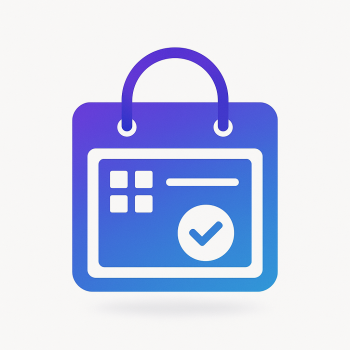Magento 2 and Web Accessibility: Making Your Store ADA-Compliant

Why Web Accessibility Matters for Your Magento 2 Store
Web accessibility isn't just a nice-to-have feature anymore - it's a legal requirement and a smart business move. The Americans with Disabilities Act (ADA) requires websites to be accessible to all users, including those with disabilities. For your Magento 2 store, this means ensuring people with visual, auditory, motor, or cognitive disabilities can navigate, understand, and purchase from your site just like anyone else.
Beyond compliance, accessible websites often rank better in search engines and reach a wider audience. Did you know that about 15% of the world's population experiences some form of disability? That's a significant market you don't want to exclude!
Key Accessibility Requirements for E-commerce Stores
Before we dive into the technical implementation, let's understand the core accessibility standards (WCAG 2.1) that apply to your Magento store:
- Perceivable: Content must be presentable in ways users can perceive (text alternatives for images, captions for videos, etc.)
- Operable: Interface components must be operable (keyboard navigation, enough time to read content, etc.)
- Understandable: Information must be understandable (clear language, predictable navigation, etc.)
- Robust: Content must be robust enough to work with current and future user tools
Magento 2 Accessibility: Out-of-the-Box Features
The good news is Magento 2 includes several accessibility features by default:
- Semantic HTML5 markup
- Basic keyboard navigation
- ARIA landmarks for screen readers
- Responsive design that works across devices
However, these features alone often aren't enough for full ADA compliance. Let's explore how to enhance them.
Improving Keyboard Navigation
Many users navigate websites using only their keyboard. Test your store by trying to complete a purchase using just the Tab key. You'll likely find some areas that need improvement.
Here's how to enhance keyboard navigation in Magento 2:
// Add focus styles to interactive elements
a:focus, button:focus, input:focus, select:focus, textarea:focus {
outline: 2px solid #0066cc;
outline-offset: 2px;
}
// Ensure all interactive elements are focusable
[tabindex="-1"]:focus {
outline: none;
}
// Add skip navigation link (add to your header template)
<a href="#main-content" class="skip-link">Skip to main content</a>
// Then in your CSS
.skip-link {
position: absolute;
left: -9999px;
top: 0;
background: #0066cc;
color: white;
padding: 10px;
z-index: 9999;
}
.skip-link:focus {
left: 0;
}Enhancing Screen Reader Support
Screen readers help visually impaired users navigate your store. Here's how to optimize for them:
// Add ARIA labels to icons (like cart, search, etc.)
<button aria-label="Search">
<span class="icon-search"></span>
</button>
// Add ARIA attributes to form fields
<input type="text" id="search" aria-label="Search products" placeholder="Search products...">
// For product images
<img src="product.jpg" alt="Blue cotton t-shirt with company logo">Color Contrast and Visual Accessibility
Proper color contrast ensures text is readable for users with visual impairments. The WCAG requires:
- 4.5:1 contrast for normal text
- 3:1 contrast for large text (18pt+ or 14pt bold)
Use tools like WebAIM's Contrast Checker to test your color combinations. Here's how to fix common contrast issues:
// Before (low contrast)
.button {
background: #f0f0f0;
color: #ffffff;
}
// After (WCAG compliant)
.button {
background: #0066cc;
color: #ffffff;
}Accessible Forms in Magento 2
Forms are crucial for checkout and account creation. Make them accessible with:
<div class="field">
<label for="email">Email Address<span class="required">*</span></label>
<input type="email" name="email" id="email" required aria-required="true">
<div class="note">We'll send your order confirmation here</div>
</div>
// For error messages
<div class="mage-error" id="email-error" role="alert">
Please enter a valid email address
</div>Accessible Product Pages
Product pages need special attention:
- Use descriptive alt text for all product images
- Ensure color swatches have text alternatives
- Make size charts accessible
- Provide text descriptions for product videos
Here's how to implement accessible product options:
<fieldset class="fieldset">
<legend class="legend">Size</legend>
<div class="control">
<input type="radio" name="size" id="size-s" value="s">
<label for="size-s">Small</label>
<input type="radio" name="size" id="size-m" value="m">
<label for="size-m">Medium</label>
</div>
</fieldset>Accessible Checkout Process
The checkout is where accessibility matters most. Implement:
- Clear progress indicators
- Logical tab order
- Descriptive error messages
- Alternative payment method descriptions
// Accessible progress bar
<nav aria-label="Checkout progress">
<ol class="progress-bar">
<li class="current" aria-current="step">Shipping</li>
<li>Review & Payments</li>
<li>Complete</li>
</ol>
</nav>Testing Your Store's Accessibility
Before launching your accessibility improvements, test thoroughly with:
- Automated tools: WAVE, axe, Lighthouse
- Screen readers: NVDA (Windows), VoiceOver (Mac)
- Keyboard testing: Navigate without a mouse
- Color contrast checkers: WebAIM's Contrast Checker
Magento 2 Extensions for Accessibility
Several extensions can help automate accessibility improvements:
- Accessibility Toolbar: Adds user-controlled options like text resizing and contrast adjustments
- Alt Text Manager: Helps manage alt text for product images
- Screen Reader Enhancement: Improves ARIA support and screen reader compatibility
Maintaining Accessibility Over Time
Accessibility isn't a one-time fix. Maintain compliance by:
- Training your team on accessibility best practices
- Including accessibility in your content creation process
- Regularly auditing your store with automated tools
- Staying updated on WCAG guidelines
The Business Case for Accessibility
Beyond legal compliance, an accessible store:
- Expands your potential customer base
- Improves SEO (many accessibility features help search engines too)
- Enhances usability for all customers
- Reduces legal risk
- Demonstrates corporate social responsibility
By making your Magento 2 store accessible, you're not just checking a compliance box - you're creating a better shopping experience for everyone while future-proofing your business.
Need help implementing these changes? Check out our Magento 2 accessibility extensions or consider our managed hosting solutions with built-in accessibility optimizations.





